|
Not sure where to place your speech tags? This guide shows you how to tell readers who’s speaking, not based on a set of rules but in respect of clarity, suspense, invisibility, and rhythm.
What is a dialogue tag?
Dialogue tags, or speech tags, are complementary short phrases that tell the reader who’s talking. They’re not always necessary, particularly if there are only two speakers in a scene, but when they are used, this is what they look like:
Said is often best because readers are so used to seeing it that it’s pretty much invisible and therefore less interruptive. What’s the rule about where tags go? Dialogue tags can be placed after, between or before dialogue. Authors sometimes ask which position is best or whether there’s a rule. There is no rule. All three positions have advantages and disadvantages, depending on what you want to achieve. Position: After dialogue Readers are so used to seeing speech tags like said at the end of dialogue that they’re almost invisible. That allows the dialogue, rather than the speaking of the dialogue, to be the focus. Below is a wee example from Recursion (p. 292). The speech takes centre stage; the doing of speech (screaming, in this case) comes afterwards. Furthermore, when the tag comes after the dialogue, it can roll seamlessly into any supporting narrative, as shown in the example from The Ghost Fields (p. 194).
There are a couple of potential disadvantages:
Position: Between dialogue Placing speech tags between dialogue is also common and unlikely to jar the reader. Here are three reasons why it works:
Here are two examples in which the mid placement of the tag means the suspense isn't interfered with. The first is taken from The Ghost Fields (p. 194); the second is something I made up.
In the first example, not having the speech tag at the end of the dialogue focuses the reader on one question: what’s the clue? Not: Frank’s the speaker.
In the second example, rejig the sentence so that Tom said comes after all the speech, and notice how this makes the wallop vanish from the line about pulling the trigger. Position: Before dialogue Placement of the tag before the dialogue isn’t a no-no but it is a less common option and more noticeable. A tag tells of speaking; dialogue shows character voice, mood and intention. When the speaker’s announced first, it’s a tap on the shoulder that draws attention to speaking being done. It expands what author and creative-writing expert Emma Darwin calls the ‘psychic distance’ between the reader and the speaker, which can flatten the mood. And, yet, this can also be its advantage. That tap introduces a more staccato rhythm that can stop a reader in their tracks. In this extract from Recursion (p. 292), the placement of the tag before the dialogue induces an acute sense of resignation – that dull thump in the pit of one’s stomach when the proverbial’s hit the fan. Not placing tags: Omission There’s no need to include a speech tag if it’s adding nothing but clutter. In the following example from Recursion (p. 125), the author has omitted them because there are only two speakers. He lets the dialogue, and its punctuation, inject the voice, mood and intention into the scene rather than telling us who’s speaking and how they’re saying it. Summing up Placement of dialogue tags isn’t about rules. It’s about purpose:
For that reason, mixing up the position of speech tags can be effective. Let’s end with an extract from Out of Sight (pp. 135–7), which demonstrates the varied ways in which author Elmore Leonard handles his tagging: beginning, between, end, and omission.
Cited sources and further reading
Louise Harnby is a line editor, copyeditor and proofreader who specializes in working with crime, mystery, suspense and thriller writers.
She is an Advanced Professional Member of the Chartered Institute of Editing and Proofreading (CIEP), a member of ACES, a Partner Member of The Alliance of Independent Authors (ALLi), and co-hosts The Editing Podcast. Visit her business website at Louise Harnby | Fiction Editor & Proofreader, say hello on Twitter at @LouiseHarnby, connect via Facebook and LinkedIn, and check out her books and courses.
7 Comments
24/8/2020 04:01:16 pm
This is so helpful! I have had a few clients with dialogue issues. I'm going to hang onto this link so I can share it in the future when I have questions about dialogue.
Reply
Louise Harnby
24/8/2020 05:39:02 pm
Glad you found it useful, Mary!
Reply
Louise Harnby
1/9/2020 07:18:33 pm
It's the only way to go!
Reply
4/9/2020 03:20:43 am
A very helpful post. I'm kind of a math nerd, so I wonder what the statistics are on the breakdown on the positioning of tags?
Reply
Louise Harnby
4/9/2020 08:54:25 am
No idea, Pete, though I suspect middle and end lead the way.
Reply
Leave a Reply. |
BLOG ALERTSIf you'd like me to email you when a new blog post is available, sign up for blog alerts!
TESTIMONIALSDare Rogers'Louise uses her expertise to hone a story until it's razor sharp, while still allowing the author’s voice to remain dominant.'Jeff Carson'I wholeheartedly recommend her services ... Just don’t hire her when I need her.'J B Turner'Sincere thanks for a beautiful and elegant piece of work. First class.'Ayshe Gemedzhy'What makes her stand out and shine is her ability to immerse herself in your story.'Salt Publishing'A million thanks – your mark-up is perfect, as always.'CATEGORIES
All
ARCHIVES
July 2024
|
|
|
|


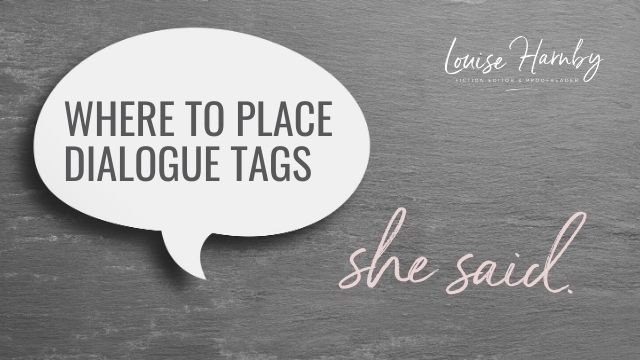
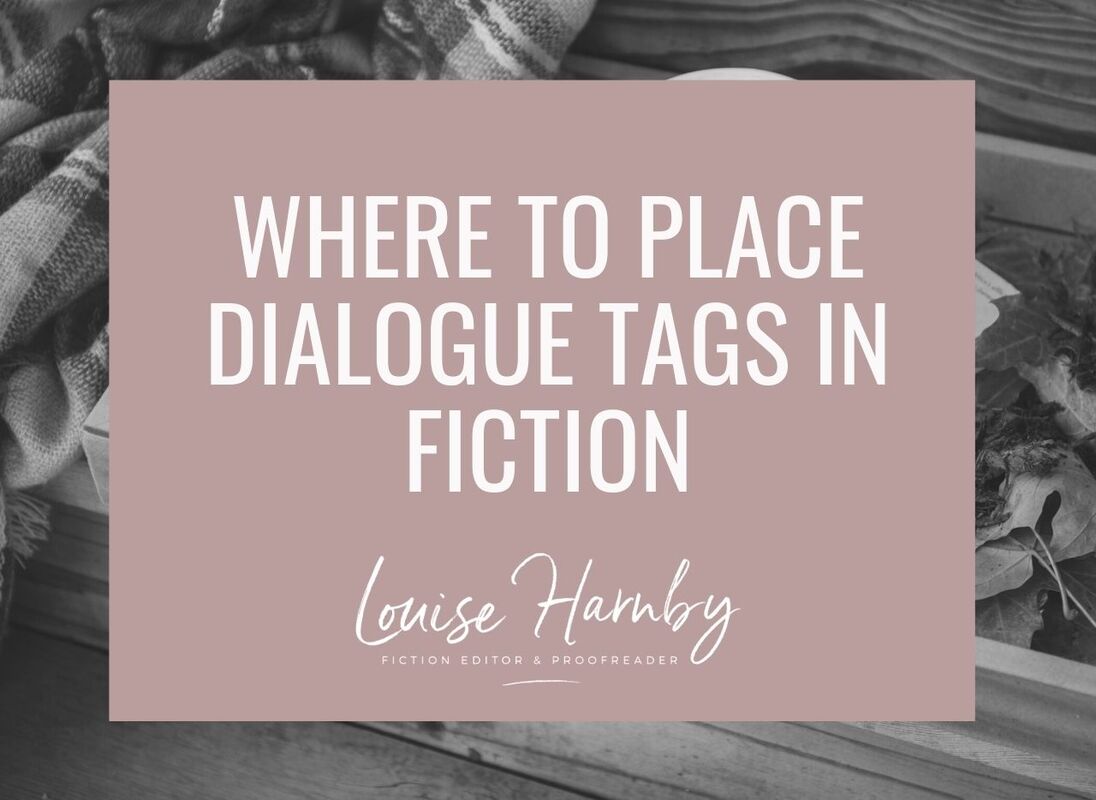
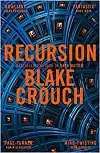
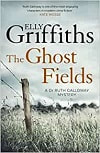
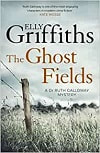
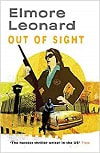













 RSS Feed
RSS Feed





